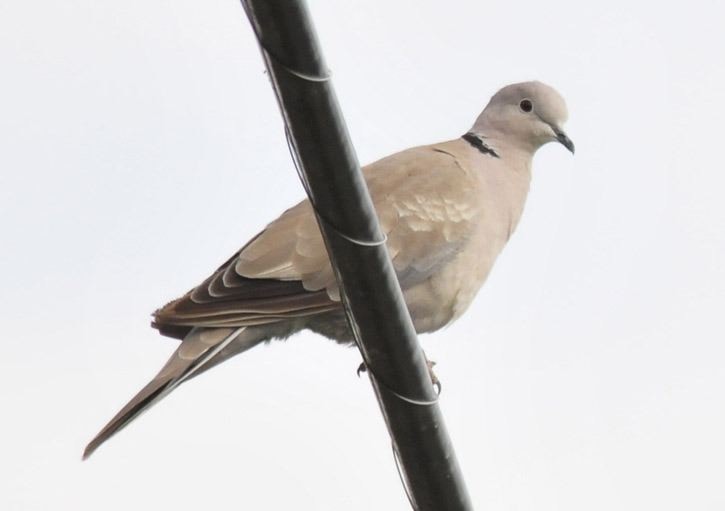Woot-hoo-hoo. Woot-hoo-hoo.
That likely wasn't an owl you heard.
It could have been a Eurasian collared dove, a greyish-brown bird with a distinct collar-type marking.
These feisty birds have started making their presence known throughout Chilliwack in the past few years.
"Everywhere I go recently people are asking me what these birds are," said Gord Gadsden, founder of the local birding website, www.fraservalleybirding.com.
Often spotted in Chilliwack bobbing on power lines or on power poles, the doves are native to Eastern Europe and Japan.
In the 1970s they were introduced in the Bahamas, according to birding sources. By the 1980s the doves were recorded in Florida.
Now they're here in the Fraser Valley and Chilliwack, with preferred nesting sites in conifer trees.
"As far as we know they got here on their own steam," said Gadsden. He means they're unlikely to be escaped pets.
The first one showed up in Rosedale in 2005, but became more well-established in parts of the B.C. Interior.
They're definitely growing in population.
Their arrival in Chilliwack actually caused a bit of excitement in the birding world. Was it an escapee, or a turtle dove?
Photos and birder accounts from the Christmas Bird Count made it official: the Eurasian collared dove had definitely arrived in Chilliwack.
Now they're being seen at feeders or in parks with increasing regularity.
So what does it mean for the other local bird species?
"Obviously when a new bird species arrives on the scene, and is successful in surviving, we take notice. They need food and they take up space."
So who are they likely to push out? The closest bird that they resemble physically is the mourning dove.
"There's nothing to suggest the Eurasian collared dove's arrival has caused the mourning dove numbers to plummet, as mourning doves are not common here, but it's always a concern that they could."
People are curious if the doves are set to become another invasive species like starlings, or could they strike a blow to dwindling songbird numbers.
Or their presence might suggest there is actually a niche and enough food here for doves and they are exploiting it, Gadsden suggested.
Here's a look at the numbers, and the population growth as counted by birders with the local Christmas Bird Count in recent years:
In 2010, the CBC recorded a whopping total of 57 Eurasian collared doves in Chilliwack, while in 2009 there were 38 in total. Back in 2008 there were only five spotted, and in 2007 there were only two.
Check out www.fraservalleybirding.com for more information on this fascinating bird. It also has checklists, discussion forums and shared sitings.
"The site is well-received and we have more than 250 members," said Gadsden. "There's been a lot of interest in the new doves."
jfeinberg@theprogress.com
twitter.com/CHWKjourno
